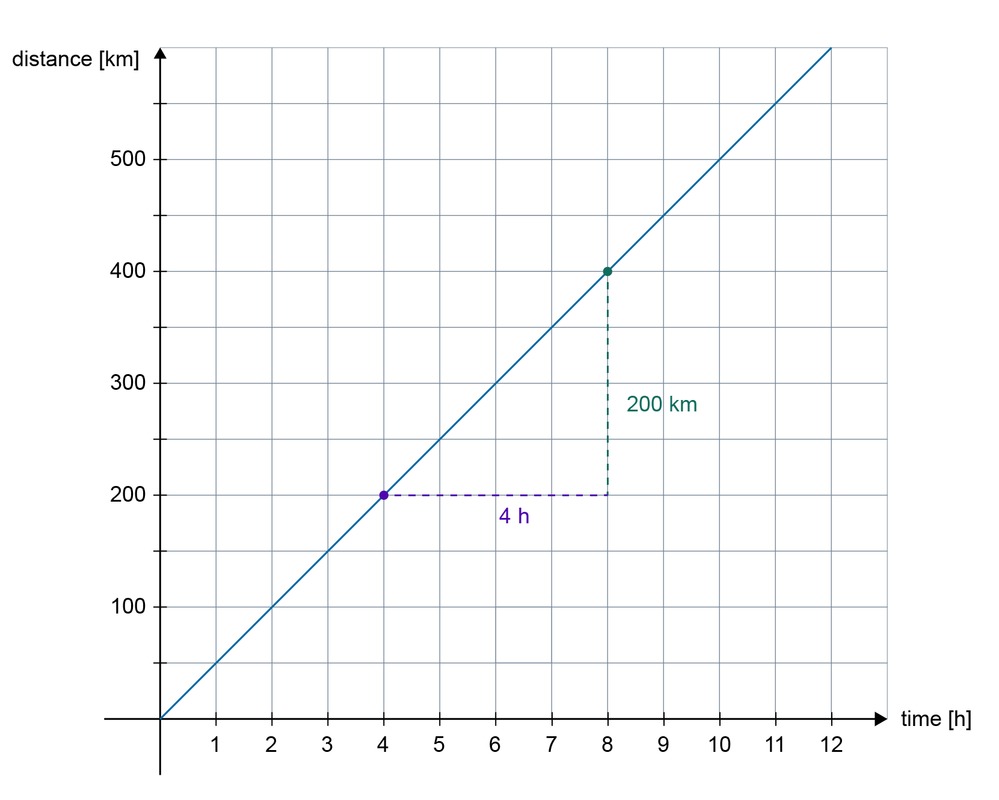8. Speed calculations
Speed calculations
Speed
Speed tells you how far an object travels in a given time.
The speed of smooth motion is calculated with the following formula:
[[$$ \text {speed} = \displaystyle\frac {\text {distance}} {\text {time}} \;, \; \; \text { so} \; \; \; v = \displaystyle\frac {s} {t} $$]]
Speed can be measured by any unit of length that is divided by a unit of time.
The most common units for measuring speed are [[$ \displaystyle\frac {\text {km}} {\text {h}} $]], [[$ \displaystyle\frac {\text {m}} {\text {s}} $]], [[$ \displaystyle\frac {\text {km}} {\text {min}} $]] and [[$ \displaystyle\frac {\text {cm}} {\text {s}} $]].
Few motorists perceive a speed of [[$ 50 $]] km/h. However, the same speed in meters per second ([[$ 14 $]] m/s) can make you think about how fast the motorcycle is actually travelling. If the driver's reaction time is [[$ 2 $]] seconds, the car will have moved forward by [[$ 28 $]] meters before the driver even realizes that the brake is applied.
- The unit [[$ \displaystyle\frac {\text {m}} {\text {s}} $]] can be converted to [[$ \displaystyle\frac {\text {km}} {\text {h}} $]] by multiplying it by number [[$ 3,6 $]].
- The unit [[$ \displaystyle\frac {\text {km}} {\text {h}} $]] can be converted to [[$ \displaystyle\frac {\text {m}} {\text {s}} $]] by dividing it by number [[$ 3,6 $]].
Example 1
The line depicts the motion of a car that travels at a steady speed. Use the graph to determine the speed of the car.

Solution:
The speed of the car is obtained by determining the slope of the time-distance graph.
[[$ \displaystyle\frac {\text {y-axial change }} {\text {x-axial change}} = \displaystyle\frac {\text {distance}} {\text {time}} = \displaystyle\frac {200 {\text {km}}} {4 {\text {h}}} = 50 \displaystyle\frac {\text {km}} {\text {h}} $]]
Answer: The car travels at a speed of [[$ 50 $]] km / h.
Example 2
The Gulf Stream brings warm water to the Northern Atlantic ocean at a surface speed of [[$ 2.0 $]] m/s. Calculate the distance a message in a bottle cast into the Gulf Stream can travel during one day.
Solution:
First, convert the speed to km / h:
[[$ 3,6 · 2,0 \displaystyle\frac {\text {m}} {\text {s}} = 7,2 \displaystyle\frac {\text {km}} {\text {h}} $]]
The speed can be calculated with the formula [[$ v = \displaystyle\frac {\text {s}} {\text {t}} $]] solved for [[$ s $]]:
[[$ \quad \begin{align} v &= \dfrac{s}{t} \space ||·t \ \\
vt &= s \ \\
-s &= -vt \space ||:(-1) \ \\
s &= vt \end{align} $]]
Now, you can replace the variables with numerical values.
Since the speed is given in km/h, the time must also be converted to hours. One day is [[$ 24 $]] h.
[[$ \quad \require{cancel} s = 7,2 \dfrac{\text{ km}}{\text{ h}} · 24 \text{ h} = 172,8 \dfrac{\text{ km} · \cancel{\text{ h}}}{\cancel{\text{ h}}} \approx 170 \text{ km} \ \\ $]]
Answer: The message in a bottle travels a distance of [[$ 170 $]] km during one day.